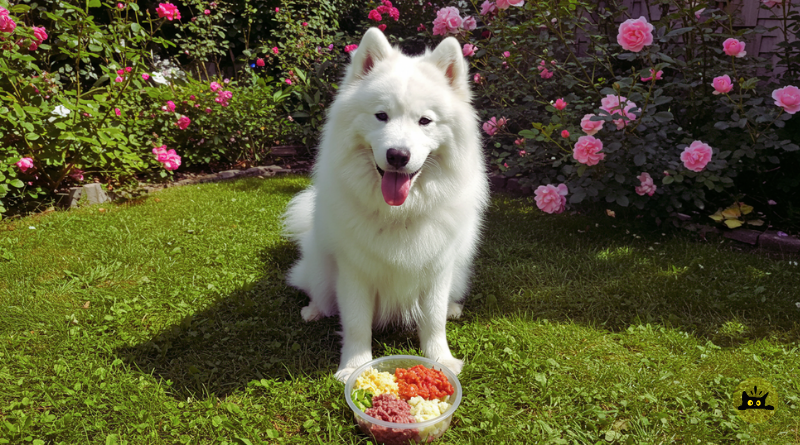More and more dog parents are making the switch to raw dog food instead of regular dry kibble. This shift isn’t just a passing trend. It shows that people want to know exactly what’s in their dog’s food and give meals that feel fresh and natural. Let’s explore what a raw food plan is, why it’s becoming so popular, and how to make the change safely.
What Is a Raw Food Plan?
A raw food plan copies what dogs eat in the wild. Instead of processed grains and fillers, it focuses on whole ingredients in these proportions:
- 60% muscle meat
- 10% edible bones
- 15% organ meat (like liver and kidney)
- 15% fruits and vegetables
Some dog parents mix these meals at home, while others choose ready-made raw packs from trusted brands.
Why Owners Are Making the Switch to Raw Dog Food
Shinier, Healthier Coat
Raw meals are packed with healthy fats like omega-3, which help your dog’s skin feel smooth and make their fur glossy. These fats also reduce itchiness and irritation, so your pup scratches less and looks great.
Easier Digestion
Many dogs have less gas and fewer tummy troubles when they eat raw. By removing processed grains and fillers, their bodies can break down protein and fat more efficiently. This leads to happier tummies and fewer digestive upsets.
More Energy and Vitality
High-quality proteins and unprocessed nutrients keep blood sugar levels steady. As a result, dogs often feel more active, playful, and alert throughout the day.
Firmer, Less Smelly Poop
When your dog absorbs more nutrients, there’s less waste left over. Raw-fed dogs tend to produce smaller, firmer stools that don’t stink as much, making cleanup easier for you.
Potential Risks to Watch
Germs in Raw Meat
Raw meat can carry germs like Salmonella or E. coli, which can make dogs—and people—sick. Always defrost meat in the fridge and clean prep surfaces right after handling raw ingredients. Wash your hands, bowls, and tools with hot, soapy water.
Too Much or Too Little Nutrients
If you don’t follow a balanced plan, your dog could get too much calcium from bones or miss out on essential vitamins from organs. Too much calcium can lead to trouble pooping, while missing vitamins can affect growth and immunity.
Choking and Bone Hazards
Edible bone bits can splinter or get stuck in your dog’s throat. Pick bone sizes that fit your dog’s breed and chewing style, and never leave them unsupervised during meals.
What to Do
Talk It Over with an Expert
Ask your vet or a pet nutrition expert before you start. They’ll help you create a balanced raw meal plan based on your dog’s age, weight, and health needs.
Plan Your Week’s Meals
Use the 60:10:15:15 ratio as a guide. Write out a simple menu for each day, and stick to these rough percentages until your expert gives you exact targets.
Prep Safely at Home
- Defrost meat in the fridge, never on the counter.
- Clean prep surfaces, bowls, and utensils right after every meal.
- Use a separate cutting board just for raw meat to avoid cross-contamination.
Monitor Your Dog’s Progress
Note down changes in your dog’s coat shine, energy levels, appetite, and poop. Bringing these notes to your vet follow-ups will help you fine-tune the diet.
Tips for a Smooth Transition
Start Slow
Add raw food slowly—begin with 10% raw on day one, then increase by 10–20% each week until you reach 80–90%. A gradual switch helps avoid tummy trouble.
Choose Quality Ingredients
Look for human-quality labels or NASC-certified products. Buying meat from trusted sources reduces the risk of germs.
Maintain Hygiene
Wipe down prep areas and wash bowls immediately after meals to keep your home safe from germs.
Daily Life Signs to Watch
Appetite Changes
Watch if your dog is more eager at mealtime or if they lose interest. A healthy appetite usually means the diet agrees with them.
Coat and Skin Condition
Look for reduced itching and a shinier coat. Dull fur or excessive scratching may signal an imbalance.
Energy and Behavior
Notice if your dog seems more playful or if they tire easily. These shifts can help you adjust nutrient levels.
Poop Consistency
Check stool size, firmness, and odor. Smaller, firmer, less smelly poop typically means better nutrient absorption.
Wrapping Up
Switching your dog to raw meals can lead to shinier fur, easier digestion, and more energy—provided you plan carefully and prep safely. Talk to an expert, balance your ingredients, and stay extra clean in the kitchen. With the right approach, raw meals can be a rewarding, healthy choice for both you and your dog.
Sources
- British Small Animal Veterinary Association (BSAVA)
- American Kennel Club (AKC)
- World Small Animal Veterinary Association (WSAVA)
Looking for more meal tips? Check out our dog meal planning guide: Is Homemade Dog Food Better Than Store Bought?

